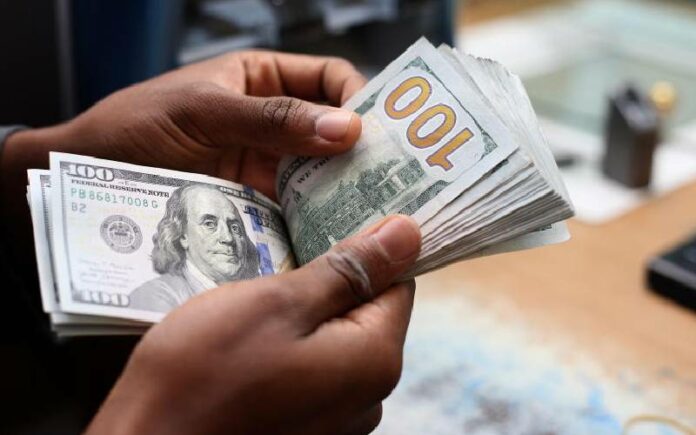The Kenya shilling has officially crossed the 122 mark against the US dollar. On Friday, November 18, the shilling was trading at 122.0294 against the US dollar. It was trading at 144.8365 against the Sterling Pound and 126.3115 against the Euro.
Over the past few months, the Kenya shilling has helplessly lost value against the dollar. When it started falling from around Sh. 103, many people thought that a correction would be forthcoming.
Then it hit Sh. 110 to the dollar, then Sh. 113 to the dollar and now it has touched a historical low of 120 to the US dollar. By mid-month to early afternoon on August 2, 2022, the shilling was quoted by the CBK as selling past 119. This indicates that it has been weakening by one shilling in less than four weeks.
All along the government through the National Treasury and the Central Bank of Kenya have remained silent. Worse, amidst government’s silence, Kenya is currently also facing an acute dollar shortage that is crippling business.
The impact of a weak shilling has been heavy. The national debt has increased without an extra borrowed shilling. Importing things such as second hand vehicles is now almost impossible. In all this, the big question is: how did we get here?
This is the question that Tony Watima focused on in an opinion feature that appeared in a local daily business newspaper recently. He argued as follows:
“A section of Kenyans have been wondering how the Central Bank of Kenya has not intervened in the foreign exchange market when the Kenya shilling has been constantly depreciating against the dollar.
There are some who believe that the government has neglected this issue and should instead roll out a plan to intervene.
For a period of time, the IMF had been saying that the Kenya shilling is overvalued and doesn’t reflect the true market value. In 2018, the IMF declared that the Kenya shilling was overvalued by 17.5 percent and re-classified it from a floating to a managed currency.
Kenya in dollar shortage crisis as CBK goes silent
Now, a country that has an exchange rate policy based on targets like trade balance, price stability, or objectives and intervenes to achieve these targets is classified as having a managed currency, often called ‘dirty floating’.
A country that leaves the currency to market determination and the monetary authority exercises independent monetary policy aimed at achieving objectives such as price stability is classified as operating a ‘floating currency’.
Before the IMF re-classification, the Kenya shilling would play around 100 against one US dollar and won’t depreciate anywhere past 103. This was strange for a market-determined currency. This minimal volatility was unusual and many of us argued that the currency was being managed.
Then came the IMF call-out, saying that based on their calculation the currency wasn’t reflecting its true value. The CBK was managing the currency to have stability, which was a departure from a pure independently floating exchange rate system that the currency was classified under.
One of the reasons for this management is foreign currency debt exposure. For every depreciation of the Kenya shilling by one against the dollar, our foreign debt increased by more Sh. 45 billion, so depreciating from 100 to 115 means that our external debt has increased by more than Sh. 500 billion.
There is also exposure coming from foreign debt interest repayments whose cost has increased because of the depreciation of the shilling.
Back to the question of the moment: why hasn’t the CBK intervened against the depreciation of the Kenya shilling?
The era of stabilizing the shilling at any opportune time by the CBK came to an end when Kenya signed the structural programme with IMF last year and one of the conditionality was that the currency would be let to float.
This, therefore, means that central bank’s hands are tied, and the currency is now being market-determined. So as the shilling currently trades at around 115, it’s finding its true value. Its forecast to get to 120 before the end of the year because of the capital flights that happen during the election period.
Interestingly, with CBK’s hands being tied, the regulator has chosen to deploy a very unorthodox means that not only undermines its mandate but also has adverse effects on the economy.
Since the CBK cannot prop up by intervening on the supply side, it has chosen to manage the demand side of the FX market.
Currently, importers and private sector players who handle big-dollar transactions are having a problem accessing the US dollars from their local banks as they are being asked to buy in batches instead.
This is meant to reduce the impact of the big transactions on the exchange rate. There are also cases where banks making huge US dollar transactions have found themselves on the wrong side of the regulator and forced to split the transactions to reduce the impact on the shilling.
This management of the demand side of the FX market poses negative effects on the business environment, leading to a slowdown of the economy.”









